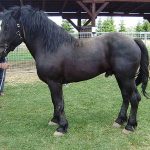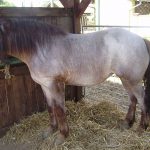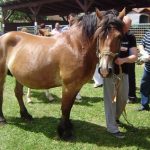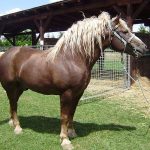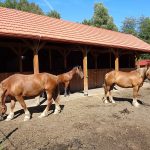Medimurje Horse
The Međimurje is an indigenous horse breed from Croatia that was developed mostly for draft works. These horses are known for their good looks, even temperament and obedient nature, however, their population at present is rapidly declining, with adequate measures being taken to prevent the breed from disappearing altogether.
Medimurje Horse Pictures
- Images of Medimurje Horse
- Medimurje Horse Images
- Medimurje Horse Photos
- Medimurje Horse Pictures
- Medimurje Horse Stallion
- Medimurje Horse
- Medimurje Horses
- Pictures of Medimurje Horse
Quick Information
| Behavioral Characteristics | Even, calm, affectionate, willing |
| Physical Traits | Medium stature with a small, broad head, short ears, a short but strong neck, slightly sloping and powerful shoulders, a full, broad chest with strongly built limbs, sturdy joints, pronounced withers, large hooves, medium size mane, and a long, bushy tail |
| Coat Colors | Usually found in bay and seal brown, but also black (other colors are extremely rare) |
| Height/Size | 15.1 to 16.1 hands (adult male and female specimens) |
| Weight | Up to 2,000 pounds (medium to heavy) |
| Common Uses | Pulling wagons, field or forest works, agriculture, meat production |
| Health Problems | Generally healthy |
| Type | Work horse, Riding horse, Meat horse |
| Blood Type | Cold |
| Ancestors (Bloodlines) | Percheron, Noriker, Brabant, Ardennes, and local Croatian breeds |
| Popular Traits | Obedient, willingness to work, durable |
| Feeding/Diet | General horse diet including hay, grass, grains, etc. |
| Country of Origin | Croatia |
| Other Information | Breed Standards |
Video: Riding the Međimurje Horse

History and Development
The Međimurje horse got its name from the Međimurje County of Croatia and was developed by crossing the Percheron, Noriker, Brabant, and Ardennes stallions that were imported to Croatia, with the local mares that possessed the characteristics of the Anglo-Arabian horses.
During its development (either towards the end of the 18th century or the beginning of the 19th century), the administration of the region was in the hands of the Hungarian Zala County for which some experts consider that the breed actually developed in the country of Hungary.
During the time, the breed was widely spread across parts of the then Habsburg Monarchy, ruled by the junior Austrian branch of the House of Habsburg, which included northern Croatia (covering Međimurje, Zagorje, Podravina, etc.), the southwestern parts of Hungary, eastern Slovenia and eastern Austria.
However, at present, the population of these horses has gone significantly low to the level of being ‘endangered’, having about 40 specimens living in the region in Croatia where it was originally developed, as well as in the eastern regions. A relatively larger population in the region separated by the rivers Mura and Drava in NE Hungary.


